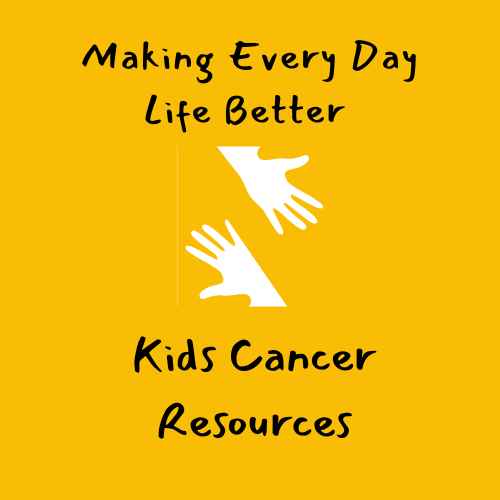Recognizing Unusual Symptoms: The First Clues to Childhood Cancer
Every parent is vigilant about their child’s health, but spotting early signs of childhood cancer can be challenging because many symptoms resemble common childhood illnesses. Awareness of these warning signals is crucial for timely diagnosis and treatment. Childhood cancer may manifest through subtle symptoms that worsen over time or persist beyond the usual duration of minor illnesses.
Common signs parents should watch for include unexplained weight loss, persistent fatigue, frequent infections, or unusual bruising and bleeding. For example, a child who bruises easily or has persistent nosebleeds may be showing early indications of blood cancers like leukemia. Another red flag is a mass or lump under the skin, which can develop in soft tissues or bones.
Understanding these early clues helps parents act swiftly to seek medical evaluation. The sooner childhood cancer is diagnosed, the better the prognosis. It’s essential never to dismiss persistent or unexplained symptoms as mere childhood ailments without professional consultation.
Systemic Symptoms That Signal the Need for Medical Attention
Persistent Fever and Night Sweats
While occasional fever is typical in children, a fever lasting more than two weeks without a clear cause can point to underlying issues, including childhood cancer. Night sweats that drench pajamas or bedding, when unrelated to environmental factors, also warrant further investigation.
Unexplained Weight Loss and Fatigue
Sudden, unexplained weight loss or a general decline in energy levels can indicate that the body is struggling with more than a common infection. Cancer cells often consume energy and nutrients aggressively, leading to these symptoms.
Parents should note if their child seems unusually tired despite enough rest or if they lose interest in favorite activities. These systemic signs often appear before more localized symptoms, making early visits to a pediatrician critical.
Physical Signs That May Indicate Childhood Cancer
Unusual Lumps and Swellings
– Lump or mass in the abdomen, neck, chest, or pelvis, which the child or parent can feel
– Soft tissue swellings that are painless or tender
– Enlarged lymph nodes that persist or grow over time
These physical signs may correspond to tumors or swollen lymph nodes associated with various types of childhood cancer, such as lymphoma or neuroblastoma. Even if the lump doesn’t cause discomfort, prompt evaluation is necessary.
Skin Changes and Bruising
Skin manifestations can be early indicators of childhood cancer. Look for:
– Pale or yellowish skin (pallor or jaundice)
– Petechiae (tiny red or purple spots)
– Bruises without an obvious cause
These can signify blood-related cancers like leukemia, where the child’s ability to produce healthy blood cells is compromised.
Behavioral and Developmental Changes to Monitor
Cancer in children doesn’t only affect the body physically; it can impact behavior and development.
Neurological Symptoms
If a child experiences persistent headaches, vision changes, dizziness, or seizures, these might be signs of brain tumors or cancers affecting the nervous system. Other warning signs include difficulties with balance, weakness in limbs, or sudden changes in personality.
Changes in Eating and Digestive Habits
While stomach aches and appetite changes are common in children, persistent nausea, vomiting, or refusal to eat may signal tumors in the abdomen or digestive tract. Watch for bloating or swelling in the stomach area as well.
Understanding Risk Factors and When to Seek Immediate Care
Although childhood cancer can occur without known risk factors, certain conditions increase vulnerability.
– Family history of cancer or genetic syndromes
– Previous cancer treatment (in cases of relapse)
– Exposure to high doses of radiation
Parents should be especially vigilant if their child has risk factors combined with any of the warning signs. Immediate medical attention is warranted if symptoms worsen rapidly, such as difficulty breathing, severe pain, or sudden neurological changes.
Working Closely with Healthcare Providers
Early diagnosis improves treatment success rates. If parents notice concerning symptoms, seeking evaluation from a pediatrician or pediatric oncologist can ensure timely tests like blood work, imaging, or biopsies.
For reliable information and support, many turn to organizations such as the American Cancer Society ([cancer.org](https://www.cancer.org)) for guidance on childhood cancer signs and next steps.
Empowering Parents: Taking Action on Early Signs of Childhood Cancer
Recognizing early signs of childhood cancer can feel overwhelming, but parents play a vital role in advocating for their child’s health. Trust your instincts if something seems off, and don’t hesitate to push for comprehensive medical evaluations.
– Keep a symptom diary to track duration, frequency, and severity
– Request referrals to specialists if initial assessments are inconclusive
– Seek support from family, support groups, and counseling services to manage stress
Open dialogue with your child’s healthcare team ensures a collaborative approach to diagnosis and treatment planning.
Key Takeaways and Next Steps
Spotting early signs of childhood cancer is essential for effective intervention. Persistent, unexplained symptoms such as lumps, bruising, fever, fatigue, and behavioral changes should never be ignored. While childhood cancer is rare, awareness and proactive medical evaluation can make a significant difference.
If you notice any worrisome signs in your child, contact your healthcare provider promptly. For more personalized advice or to discuss concerns, visit khmuhtadin.com and connect with experienced professionals who can support your journey every step of the way. Your attentiveness could be lifesaving.




